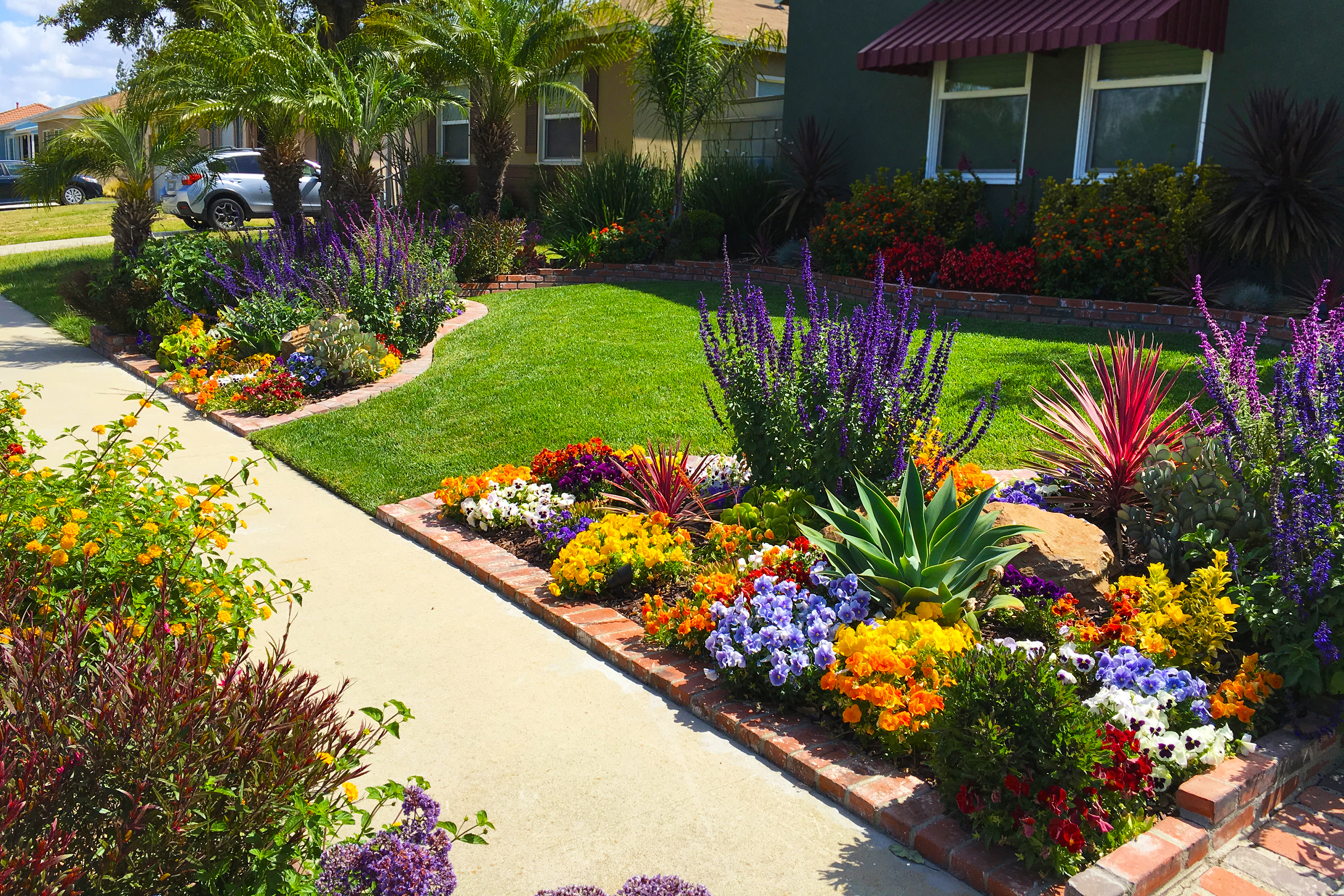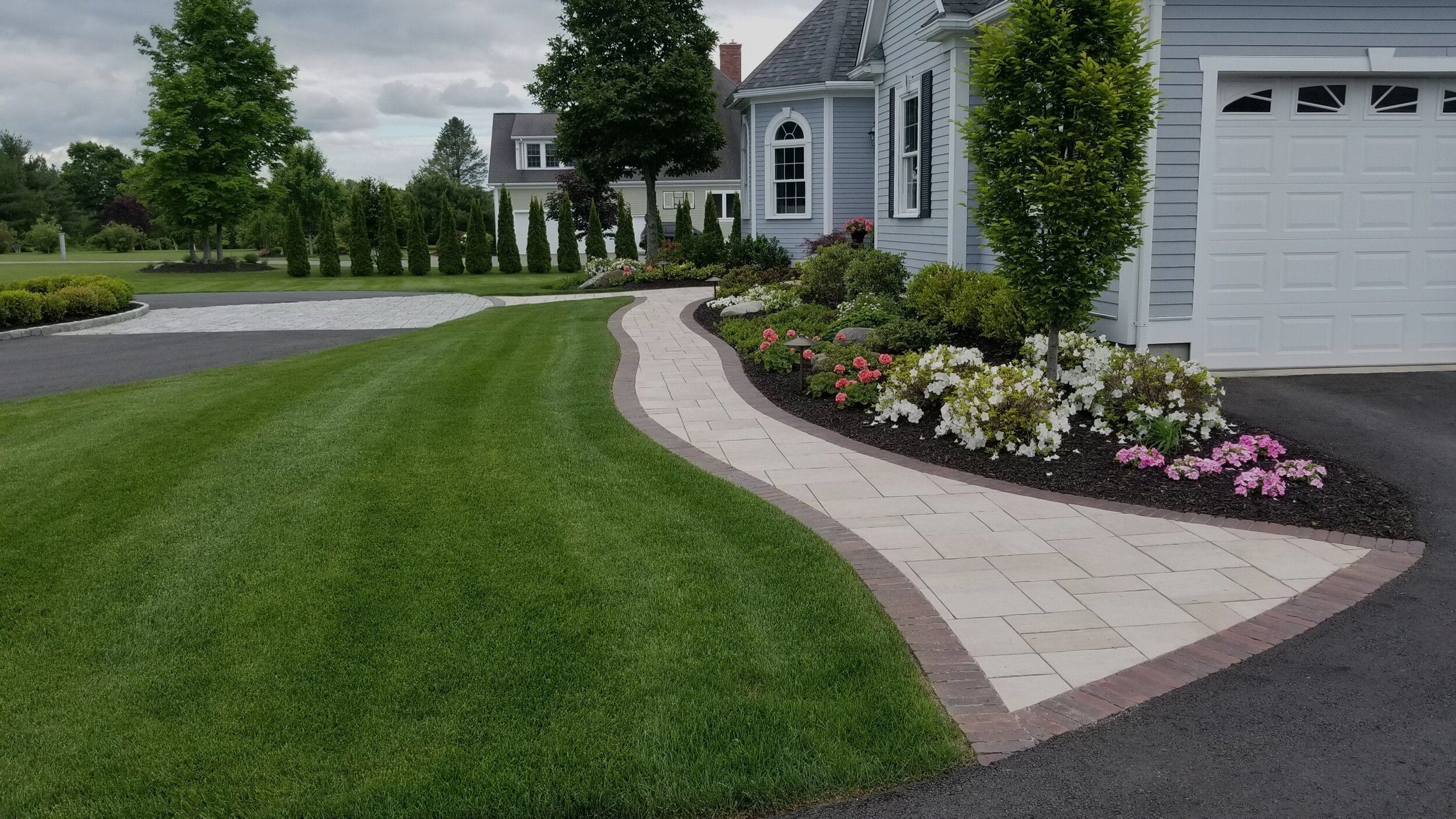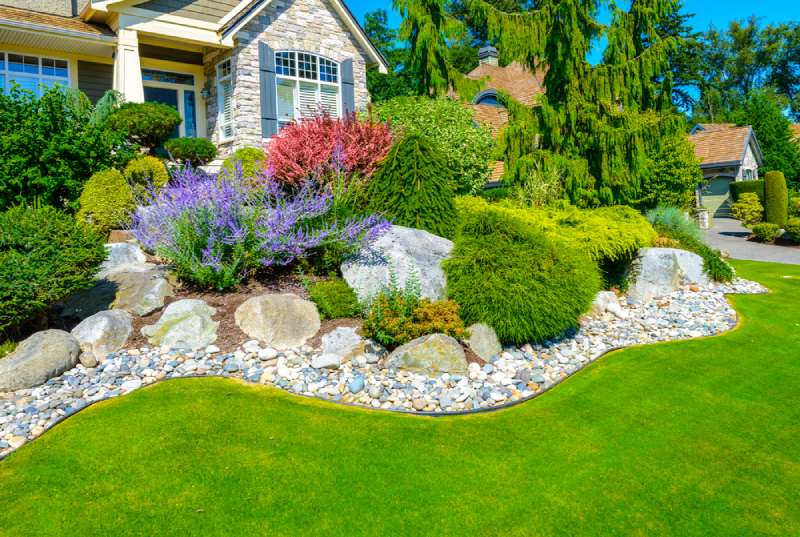Check Out Creative Solutions with Expert Palm Desert Landscaping
Check Out Creative Solutions with Expert Palm Desert Landscaping
Blog Article
A Comprehensive Overview to Designing and Implementing Effective Landscaping Solutions
The art and science of landscaping extend beyond simple visual appeals; they include a thoughtful combination of style principles, ecological stewardship, and practical implementation. A detailed overview to effective landscaping options starts with a comprehensive understanding of your outdoor area, stressing the importance of equilibrium, proportion, and unity. As we check out sustainable methods and the choice of proper vegetation, the effects for biodiversity and area wellness end up being progressively evident. What methods can one utilize to ensure these landscapes not only grow however also thrive attuned to their surroundings?

Understanding Landscape Design Concepts
One could question what foundational components add to reliable landscape style. At its core, successful landscape layout depends upon numerous vital concepts that lead the plan and choice of components within a space. These concepts consist of unity, equilibrium, rhythm, and proportion, each offering to produce an unified exterior setting.
Unity refers to the natural relationship among different elements, making certain that they interact aesthetically and functionally. Equilibrium can be accomplished via symmetrical or unbalanced plans, allowing the landscape to feel steady and welcoming. Percentage involves recognizing the scale of components in relationship to each various other and the surrounding setting, promoting visual harmony and convenience.

Assessing Your Outdoor Room
Prior to implementing the principles of landscape layout, a detailed analysis of your outside room is important. This preliminary analysis assists specify the range of your landscape design project and guarantees that your layout aligns with the special characteristics of your building. Begin by evaluating the measurements of your area, taking specific dimensions to recognize the offered area for different aspects such as patio areas, paths, and yards.
Next, observe the existing attributes of your landscape, including topography, dirt quality, and drainage patterns. These aspects dramatically influence plant choice and positioning. In addition, assess the sunshine direct exposure across various locations throughout the day, as this will certainly affect the types of plants that thrive in your garden.
Think about the microclimates created by frameworks, trees, and other barriers, as they can impact temperature and moisture levels. Take note of any kind of existing plants or hardscape components that you desire to remove or maintain. This thorough assessment lays the groundwork for a educated and efficient landscape design option, making sure that your design is not only aesthetically pleasing however likewise practical and lasting for years ahead.
Lasting Landscape Design Techniques
These practices not only promote ecological equilibrium however additionally enhance the visual and useful value of a landscape. Executing effective irrigation systems, such as drip irrigation, minimizes water waste and guarantees that plants obtain appropriate moisture (Palm Desert Landscaping).

Another effective method is the strategic placement of trees and shrubs to offer all-natural windbreaks and shade, hence lowering power expenses (Palm Desert Landscaping). Rainfall gardens can be incorporated right into the landscape style to take care of stormwater overflow successfully, filtering system contaminants before they go into waterways
Selecting the Right Plants
Selecting the right plants for your landscape is essential to accomplishing both aesthetic allure and eco-friendly harmony. The process starts with an understanding of your regional climate, soil problems, read the article and the particular microenvironments within your landscape. Examining aspects such as sunlight exposure, moisture levels, and existing YOURURL.com vegetations will certainly assist you choose plants that grow in your distinct setting.
Take into consideration incorporating indigenous plants, as they are well-adapted to neighborhood problems, need much less maintenance, and assistance regional wildlife. Furthermore, selecting a diverse variety of varieties can improve biodiversity while lowering the danger of disease and bug episodes. It is important to review the growth behaviors, flowering periods, and seasonal shades of possible plants to produce a vibrant and cohesive landscape.
Additionally, think of the intended use of the area; for instance, if the location will certainly experience high foot web traffic, decide for resistant ground covers. By thoughtfully selecting plants that line up with both your visual goals and ecological requirements, you can create a lasting landscape that not only enhances your residential or commercial property yet also contributes positively to the surrounding ecological community.

Execution and Upkeep Techniques
When the ideal plants have actually been chosen for your landscape, the focus shifts to reliable implementation and recurring maintenance approaches. Effective installment starts with appropriate site preparation, which consists of soil testing to identify nutrient degrees and pH, complied with by modifying the dirt as required. Very carefully set up plants according to their growth habits and light demands, ensuring appropriate spacing to promote healthy and balanced development.
Watering is a critical element of implementation. Establish a watering schedule that takes into consideration the certain demands of each plant species, readjusting for seasonal modifications. Utilizing drip watering systems can boost water performance and lower overflow.
Maintenance approaches need to be applied to ensure the long life and vitality of your landscape. Routine jobs consist of weeding, mulching, and pruning to control growth and protect against disease. Fertilizing ought to be carried out based on soil tests, offering the essential nutrients without over-fertilizing.
Monitoring for pests and diseases is necessary; early discovery can prevent considerable damage. Lastly, seasonal adjustments to upkeep regimens, such as preparing and winterizing perennials for springtime growth, will certainly Discover More Here guarantee that your landscape remains healthy and visually enticing year-round.
Verdict
Successful implementation and recurring maintenance additionally make certain the longevity and vigor of landscapes. By integrating these aspects, landscapes can be transformed right into lovely, practical settings that promote biodiversity and contribute positively to neighborhood well-being.
One could wonder what foundational components contribute to efficient landscape layout. At its core, effective landscape layout pivots on several key principles that guide the arrangement and selection of aspects within a room.Picking the right plants for your landscape is crucial to accomplishing both visual appeal and ecological harmony. It is important to assess the development behaviors, growing durations, and seasonal shades of potential plants to create a natural and vibrant landscape.
Once the ideal plants have actually been picked for your landscape, the emphasis changes to effective execution and recurring maintenance methods.
Report this page